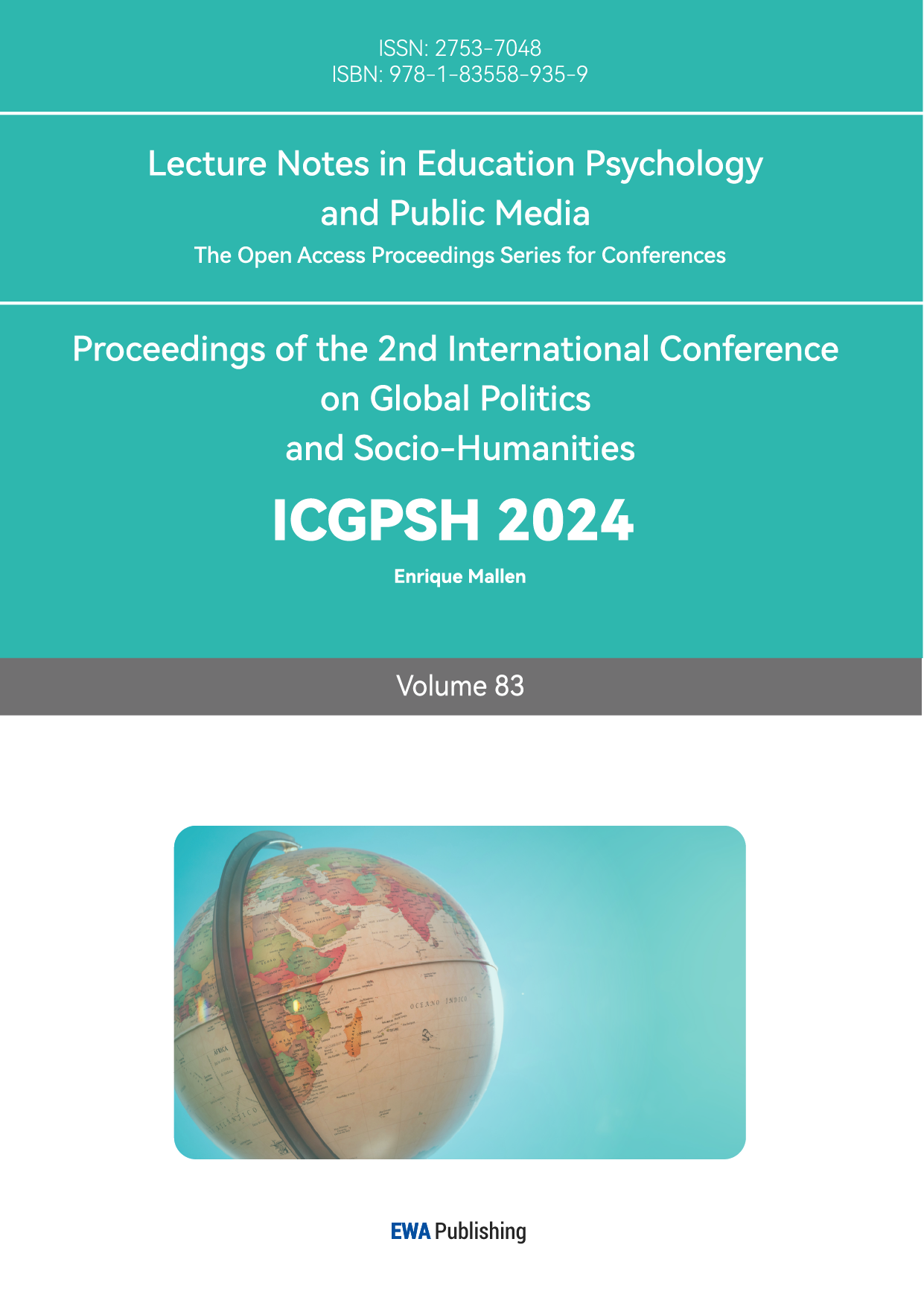1. Introduction
The Qiang people are an ethnic group with a long history. Originating from the ancient Qiang, the Qiang are an ancient and important part of the Chinese nation. They have crossed a long and distant historical trajectory, leaving behind heavy imprints and precious memories that have been passed down from generation to generation in the cleansing of the ages. In ancient times, the Qiang people made their living by shepherding sheep, so when the ancients created the characters, they combined the characters for “sheep” and “man” to form the word “Qiang” today.
The unique ethnic culture and pattern art of Qiang is a treasure in the cultural treasury of the Chinese nation. As one of the carriers of Qiang culture, Qiang patterns not only reflect the profound understanding and unique aesthetics of the Qiang people of nature, life and religion, but also carry the historical memory and cultural heritage of the Qiang people. However, with the acceleration of modernization, Qiang patterns are facing the risks of inheritance breakage and loss of skills. Therefore, it is of great practical significance and theoretical value to explore how to utilize AIGC technology to protect and pass on Qiang patterns from the perspective of intangible cultural heritage in today's context.
2. Overview of Qiang patterns
2.1. Qualities of Qiang Patterns
The upper basin of the Min River in Mianyang, Sichuan Province, China, is the main settlement area of the modern Qiang ethnic group in China, and it is an important ethnic corridor. Today, Han, Qiang and Tibet show a vertical and three-dimensional distribution pattern in the area[1]. The exchanges between ethnic cultures have allowed Qiang patterns to reflect, to a certain extent, the common characteristics of ethnic minorities. Scholar Wang Mingke in his famous book “Qiang between Han and Tibet” depicts the general state of existence of Qiang culture “drift”: the closer to the west and north of the Qiang, the more like the Tibetans; the closer to the east and south of the Qiang, the more like the Han. The closer the Qiang get to the west and the north, the more they resemble the Tibetans; the closer they get to the east and the south, the more they resemble the Han Chinese[2].
But the Qiang are still a unique people. In the Qiang territory, there is a tendency to form a more independent economic production and social life unit, which makes the different regions show certain differences in language, culture, customs and economy[3]. Different regions of the Qiang tribes represent the differences in totem patterns, and this difference affects the aesthetics of the tribe. The Heihuzhai in Mao County, Mianyang, Sichuan Province, favors the imagery of “tiger”, and the patterns of this village show relatively more images of tigers and cats.
There are no canonical or written records of Qiang cultural heritage, so Qiang patterns retain certain primitive qualities. One of the most iconic features of Qiang culture is the white stone worship. The Qiang people believe that mountains, rivers and streams all host gods, and the gods are hosted in white stones, so the Qiang people worship white stones as things that host the gods. The Qiang people will honor the white stone and hold rituals. The birth of Qiang patterns cannot be separated from the Qiang people's observation and reverence for the natural environment. This reverence for the belief that everything has a spirit makes the Qiang people's tattoos show a rich variety of plant and animal tattoos.
The Qiang have an aesthetic tendency different from that of other ethnic groups. They have respect for the “divinity” of all things, which is the common spiritual characteristic of their own people in perceiving nature and the world, and is also the unique cultural symbol of the Qiang people. Therefore, to a certain extent, their tattoos carry the respect for “divinity” and show the obvious praise and passion for life. The Qiang people have been living in the high mountains for a long time, and they extract and abstract every aspect of their living environment as tattoos to be applied to their living environment and to express their gratitude for life and nature. Besides extracting the plants and animals around them, the Qiang people also like to extract the essential tools in their daily life, such as hoes and sickles.
Shibi culture is also an important feature of Qiang culture, so some Qiang patterns have certain religious attributes. The Qiang people have their own religious and sacrificial rituals, which are their means of communication between people and people, and between people and nature. Some of the Qiang tattoo patterns also come from religious beliefs, such as sheep totem, water pattern, flame pattern, sun pattern, moon pattern, star pattern and so on. Since ancient times, the Qiang people have taken sheep herding as their main source of food, and sheep have gradually become the sign and symbol of the Qiang clan, thus they have formed sheep totem worship. The sheep's head pattern is the most representative pattern of the Qiang people, and the Qiang people decorate it on their furniture, houses and clothes to express their respect for sheep, an animal resource on which they depend for their survival. Patterns play an important role in the religious beliefs of the Qiang. Myths and rituals in traditional Qiang beliefs are often associated with specific patterns that are seen as having sacred power and symbolism.
The Qiang people are passionate about the legends and their aspirations for an ideal life through songs. This passionate yearning is also reflected in the patterns. A large part of Qiang patterns are ideal and auspicious symbols. The Qiang people often use plants in nature to express their sincere blessings to their loved ones. There are also various kinds of plants in the decorative patterns. The ram's horn flower, also called azalea, is considered by the Qiang people to be the flower of love, blessing good love. There are also pomegranate motifs, which have undergone various deformations in the Qiang regimental flower patterns, and the symbolism is still the expectation of having many children and grandchildren.
2.2. Visual Characteristics of Qiang Patterns
The special characteristics of Qiang patterns are also reflected in the diversity of carriers. It is also reflected in the diversity of carriers, such as buildings, costumes, decorations and rituals. All Qiang patterns are originated from the daily life of the Qiang people, who get inspiration from all kinds of plant patterns and animal patterns, as well as natural phenomena, interpreting the concept of “art comes from life, but is higher than life” to the fullest extent (Figure 1). Qiang patterns are usually divided into plain and colored. Plain-colored patterns are usually blue or black in color, with white as the accent. Plain Qiang patterns mostly depict the static appearance of the daily life of the Qiang people and plant patterns, etc. Colorful embroidery, on the other hand, uses peach, red, and black patterns. While color embroidery uses peach, blue, green, orange, lake blue and so on. The colorful patterns are bright and vivid, and the bright colors host their enthusiasm for life.
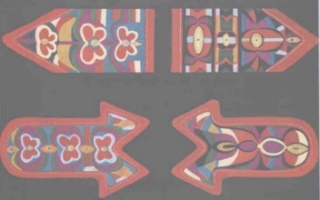
Figure 1: Needlework bag pattern
The more expressive meanings of Qiang patterns are: worship and admiration for nature, reverence for the animal and plant resources on which they depend for survival, and respect for the living environment. Qiang patterns are famous for their rich subjects, unique compositions, vivid colors and exquisite craftsmanship. Pattern, color, and composition are the three major elements that constitute the entire design. Qiang embroidery exhibits strong attributes, firstly, its distinctive pattern characteristics, and secondly, its bold color matching and clever color coordination. These two elements blend together to create the highly recognizable Qiang embroidery we see today. Therefore, in the process of innovative design, we focus on pattern characteristics and color values as the core of our design, preserving the core essence of Qiang embroidery[4].Qiang motifs include cloud patterns, sheep patterns, floral patterns, geometric patterns and many other types. Qiang embroidery pattern expression subject matter displayed in Table 1.
Table 1: Qiang embroidery motifs and themes[4].
botanical pattern | animal print | geometric pattern |
crocheted pattern, chrysanthemum pattern, peony pattern, pomegranate pattern, peach pattern, golden gourd pattern, wheat spangles pattern, | Sheep tattoo, moth tattoo, lion tattoo, | Marquee pattern, back pattern, cloud pattern, |
sea pomegranate pattern, peach pattern, golden gourd pattern, wheat pattern, sea Begonia, | Dog pattern, dragon and phoenix pattern, pig pattern, | Chain pattern, cross pattern, sun and moon |
Potted Flower, Fortune Tree, Tangled Branch pattern | Cat Tattoo | Star pattern |
Qiang embroidery pattern design has various styles such as continuity, center and edges. Using the imagery extracted from the abstraction of the Qiang people, the elements are combined appropriately by means of bipartite continuity and center focus(Figure 2).
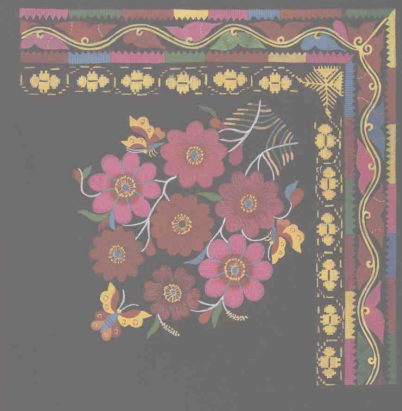
Figure 2: The Butterfly at Sunrise.
3. Protection and Difficulties of Qiang Patterns in Mianyang City
In the new stage of promoting socialist culture towards greater prosperity, the CPC and the Chinese government have particularly emphasized the importance of the protection of cultural heritage and cultural relics, as well as their central position in the cultural inheritance of society. In order to respond positively to this call, in 2017, Chinese authorities launched the Plan for the Revival and Development of Traditional Chinese Crafts, aiming to deepen the protection of cultural heritage and activate the vitality and inheritance value of traditional Chinese crafts through a series of initiatives. “We know what has happened since when, but we should avoid trying to look at the past merely with that kind of conception; we should try to understand it in terms of its own characteristics.” [5]
Mianyang City, as one of the major settlements of the Qiang people, Qiang patterns have been widely inherited and developed here. However, with the acceleration of modernization and the impact of foreign cultures, Qiang patterns are facing problems such as old patterns and broken inheritance. Specifically, it is manifested in the following aspects: firstly, the inheritors are aging seriously, and the younger generation lacks interest in Qiang patterns and finds it difficult to learn them thoroughly. At the same time, modern young people have a low sense of identification with Qiang culture. This leads to the lack of opportunities for the integration of Qiang patterns with modern civilization. Secondly, there is a single way of inheritance and a lack of innovation and development. The traditional way of inheritance of Qiang tattoos is mainly the hand-to-mouth transmission between mothers and daughters and sisters. Most of them directly reproduce the patterns passed down in the past, lacking innovation and deep understanding. Due to the lack of written records, modern Qiang people draw on traditional patterns, resulting in similar styles of products, monotonous production content, and a lack of rigor in lines, composition and color matching. Thirdly, there is a lack of effective protection and inheritance mechanism. This leads to the risk of losing the tradition.
4. Current Situation and Problems in the Preservation of Cultural Identity of Qiang Patterns
4.1. Difficulties in the transmission of Qiang patterns
The Qiang people have exchanged and integrated with each other in the two major civilizations of China and Tibet. Up to now, the Qiang people have been more obviously “Sinicized”. While advocating the preservation of Qiang patterns, it is necessary to avoid stereotyping the impression of Qiang people, grasp the unique nature of Qiang culture, and sort out the characteristics of Qiang patterns that are different from those of other cultures. At the same time, it should not be detached from today's general trend of cultural exchange and integration. It is necessary to respect history and facts, grasp the subjectivity of Qiang culture and respect cultural diversity.
Because the Qiang people have no inherited writing, the Qiang patterns are basically passed down through oral tradition. Nowadays, the functionality of the Qiang language is weakening as the number of Qiang speakers decreases. To preserve the ecology of Qiang patterns, the living conservation of the Qiang language is indispensable. The composition of Qiang villages has changed dramatically since they left the subsistence farming and herding way of life. With the decline of the Qiang language and the gradual disintegration of the original ecological environment of Qiang patterns, the protection of Qiang patterns has lost the cultural space and social activities on which they depend. In the development and excavation of the Qiang living space, the inevitable trend of commercialization has made the Qiang patterns more of a display resource, losing their original flavor to a certain extent. What's more, the phenomenon of dissemination without respecting the actuality tends to be serious in some villages in order to strengthen the so-called typical impression of culture to attract tourists.
4.2. Unfavorable factors for the preservation and transmission of ethnic patterns
In the practice of preserving Qiang patterns, static and dynamic are generally involved. In the static aspect, generally the Qiang patterns are systematically sorted out and recorded and organized into books, and the folk culture data are properly preserved. However, there is a lack of a set of more scientific and comprehensive census and statistics in finding information. Especially after the great earthquake, there is no convenient way to access the data of the Qiang patterns. Given that there is no convenient way to access the information, how to call and learn from the sorted out information has also become a problem.
In terms of dynamics, government departments have taken measures to maintain the ecological environment of the Qiang villages and to set up non-heritage cultural centers to directly impart relevant cultural knowledge. This series is also constrained by factors such as funding, teachers, and student sources. In this case, it is easy to create conflicts between commercialized activities and maintaining the original ecology.
5. An Initial Exploration of Multi-Creative Presentation of Qiang Patterns Based on the AIGC Paradigm
As an important carrier of Qiang culture and an important part of intangible cultural heritage, the protection and inheritance of Qiang patterns have important practical significance and theoretical value.
5.1. Digital Preservation and Presentation
Qiang patterns need to be completely recorded and deeply digitized for protection and inheritance. Through field surveys, information and patterns of Qiang patterns are collected, and the constitutive forms and expressive connotations of Qiang patterns are recorded. Then through high-precision scanning and digitizing technology, a vast digital pattern library is constructed. At the same time, virtual reality, augmented reality and other technologies are used to make the Qiang patterns appear in the digital world in the form of 3D stereo. Build a virtual Qiang settlement, so that the audience do not need to personally visit the Qiang village, just click the mouse or wear VR equipment, will be able to cross the boundaries of space and time, immersive experience of the unique charm of the Qiang culture.
In order to ensure that the inheritance of Qiang patterns is not only limited to the form of reproduction, the digital storage system not only needs to record the intuitive information such as the shape, color, and constituent elements of the patterns, but also needs to record the rich cultural significance and historical stories behind them. These stories are like a string of bright pearls, linking up the veins and essence of Qiang culture, and providing a key for future generations to understand the deeper connotations of Qiang culture.
The introduction of AI technology opens up a brand new path for the research and creative presentation of Qiang patterns. With the intelligent analysis ability of AI, we can quickly and accurately extract the key information of Qiang patterns, realize intelligent classification and clustering, and greatly improve the research efficiency and accuracy.AI can also reveal the deep rules and future trends of the aesthetic integration of national cultures through the analysis of big data, which will provide powerful support for the innovative development of Qiang culture. In addition, the use of AI technology also promotes the cross-border integration of Qiang culture with other disciplines, laying a solid foundation for the diversified and internationalized dissemination of Qiang culture.
5.2. Innovative legacy under AIGC
Using AIGC technology, Qiang patterns are combined with modern graphic design to develop graphic designs with national characteristics. It can also generate animations characterized by Qiang patterns.
Utilizing the unlimited potential of AIGC technology, Qiang patterns are skillfully integrated with modern graphic design to create a new style of graphic design that contains deep ethnic cultural heritage and meets contemporary aesthetic trends. Through the collision of algorithm optimization and innovative design thinking, the classic elements of Qiang patterns are given new vitality, and they are presented in various styles, such as modern abstract, minimalist or retro trend, and become the highlights of brand logos, package designs, posters, publicity, and other graphic design fields (Figure 3).
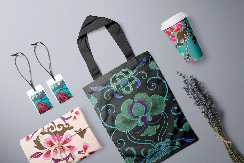
Figure 3: Qiang Traditional Pattern Design - Cultural and Creative Designs[6].
In addition, AIGC technology can also help generate animation works characterized by Qiang patterns. The spirit and mystery of Qiang patterns can be vividly reproduced on the screen in a dynamic way. Through the dynamic changes in the pattern display, the audience can more intuitively feel the rhythms and rhythms of the Qiang culture, as if they were in a living world of Qiang art (Figure 4). These animation works can not only be used in the fields of cultural publicity and tourism promotion, but also inject new cultural elements and artistic inspirations into the multimedia industries such as film and television, games and so on.
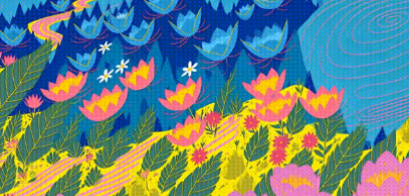

Figure 4: AI animation.
AIGC technology is utilized to generate animation with the characteristics of Qiang patterns and express the connotation of Qiang patterns by combining live shooting. In utilizing AIGC technology to fuse live shooting materials, there are now relevant works (Figure 5). Qiang pattern, as a visual carrier of national history and culture, contains rich symbolic meaning and aesthetic value. In the animation design stage, we integrate the live-action scene with the virtually generated Qiang pattern elements. Through 3D modeling and rendering technology, we seamlessly combine the live-action materials such as traditional Qiang architecture, costumes and living scenes with the AI-optimized patterns to create a real and imaginative visual space.
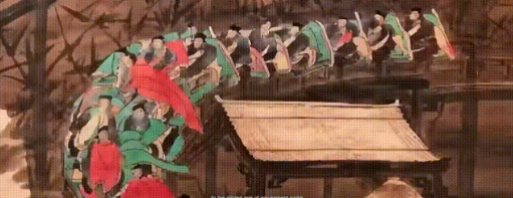
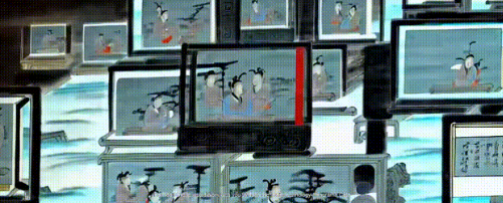
Figure 5: The Great Song Literati Punk Project: Heimdall Industries[7].
AIGC technology can also be used in the field of education, through virtual reality (VR) and augmented reality (AR) technology, projection devices, etc., allowing the audience to learn about Qiang patterns in an interactive and immersive way, and stimulating their interest in traditional culture and creativity. This innovative application of AIGC technology in the field of education is not only limited to the demonstration of Qiang patterns (Figure 6), but also extends to the in-depth exploration and learning of the whole Chinese nation and even the world's diverse cultures. be expanded to the in-depth exploration and learning of the entire Chinese nation and even the world's diverse cultures. Through the construction of rich virtual cultural museums, historical scenes and interactive learning platforms, students can experience the glory of ancient civilization in the virtual environment, and feel the artistic charm of Qiang patterns and the deep historical and cultural significance behind them in detail.
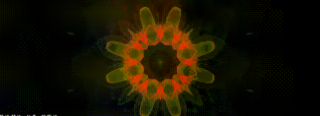

Figure 6: AI+TouchDesigner: Creating a case for tattoo sound visualization[8].
6. Conclusion
In exploring the creative inheritance of AIGC and Qiang traditional patterns, we can deeply appreciate the infinite possibilities of cultural inheritance and innovation integration. Empowered by AIGC technology, the unique pattern design of the Qiang people can cross the boundaries of time and space, and be displayed in front of the world in a more vivid and diversified form, which not only enriches the language of expression of visual art, but also opens up a new path for the inheritance of national culture. In the future, with the continuous progress of technology and the continuous stimulation of creativity, we believe that the fusion of AIGC and Qiang patterns will blossom into an even more brilliant light, contributing to the diversity of Chinese culture with its unique power. Under the perspective of intangible cultural heritage, the research on the protection and inheritance of Qiang patterns in Mianyang City reveals the survival wisdom and innovative vitality of national treasures in modern society. Through in-depth exploration and practice, we have enhanced our understanding of its cultural connotation and promoted the innovation of the protection and inheritance mechanism, hoping that this precious heritage can be passed on to the next generation.
References
[1]. Li , S.M.(1980). A Study of the Qiangs in the Western Mountains of the Tang Dynasty, Journal of Sichuan University (Philosophy and Social Science Edition), (01), 83-95.
[2]. Wang, M.K. (2008). Qiang is between China and Tibet, Shanghai, China: China Book Store;1-339.
[3]. Jiang, B., & Zhang, Y. (2009). Study on the Protection and Development of Traditional Qiang Culture. Journal of Southwest University for Nationalities (Humanities and Social Sciences Edition), 30(04), 19-24.
[4]. Hu, H.(2021). National Taiwan Normal University. Master's thesis, Southwest University of Science and Technology.Mianyang, Sichuan.
[5]. Lin Chengjie. (2004) History of India, Beijing: People's Publishing House.
[6]. TackerZS (2018). Beichuan Qiang embroidery cultural and creative product design. Available online:https://www.zcool.com.cn/work/ZMjklNTk2Mjg=.html (accessed on August 11, 2018).
[7]. Yanxiangning(2023). The Great Song Literati Punk Project: Heimdall Industries_Part1_Heimdall Land|Heimdall Land. Available online: https://www.bilibili.com/video/BV12R4y1q7Wa/?spm_id_from=333.337.search-card.all.click&vd_source=5a045d758a54b5f3a55852ba313c8732(accessed on February 11, 2023).
[8]. Nanming Youyuzi(2024). AI+TouchDesigner: Creating a case for tattoo sound visualization. Available online: https://www.bilibili.com/video/BV1or421t7T2/?spm_id_from=333.337.searchcard.all.click&vd_source=5a045d758a54b5f3a55852ba313c8732(accessed on March 28, 2024).
Cite this article
Tang,Y. (2025). An Initial Exploration of the Multidimensional Creative Presentation of Qiang Patterns Integrated with AIGC. Lecture Notes in Education Psychology and Public Media,83,44-51.
Data availability
The datasets used and/or analyzed during the current study will be available from the authors upon reasonable request.
Disclaimer/Publisher's Note
The statements, opinions and data contained in all publications are solely those of the individual author(s) and contributor(s) and not of EWA Publishing and/or the editor(s). EWA Publishing and/or the editor(s) disclaim responsibility for any injury to people or property resulting from any ideas, methods, instructions or products referred to in the content.
About volume
Volume title: Proceedings of the 2nd International Conference on Global Politics and Socio-Humanities
© 2024 by the author(s). Licensee EWA Publishing, Oxford, UK. This article is an open access article distributed under the terms and
conditions of the Creative Commons Attribution (CC BY) license. Authors who
publish this series agree to the following terms:
1. Authors retain copyright and grant the series right of first publication with the work simultaneously licensed under a Creative Commons
Attribution License that allows others to share the work with an acknowledgment of the work's authorship and initial publication in this
series.
2. Authors are able to enter into separate, additional contractual arrangements for the non-exclusive distribution of the series's published
version of the work (e.g., post it to an institutional repository or publish it in a book), with an acknowledgment of its initial
publication in this series.
3. Authors are permitted and encouraged to post their work online (e.g., in institutional repositories or on their website) prior to and
during the submission process, as it can lead to productive exchanges, as well as earlier and greater citation of published work (See
Open access policy for details).
References
[1]. Li , S.M.(1980). A Study of the Qiangs in the Western Mountains of the Tang Dynasty, Journal of Sichuan University (Philosophy and Social Science Edition), (01), 83-95.
[2]. Wang, M.K. (2008). Qiang is between China and Tibet, Shanghai, China: China Book Store;1-339.
[3]. Jiang, B., & Zhang, Y. (2009). Study on the Protection and Development of Traditional Qiang Culture. Journal of Southwest University for Nationalities (Humanities and Social Sciences Edition), 30(04), 19-24.
[4]. Hu, H.(2021). National Taiwan Normal University. Master's thesis, Southwest University of Science and Technology.Mianyang, Sichuan.
[5]. Lin Chengjie. (2004) History of India, Beijing: People's Publishing House.
[6]. TackerZS (2018). Beichuan Qiang embroidery cultural and creative product design. Available online:https://www.zcool.com.cn/work/ZMjklNTk2Mjg=.html (accessed on August 11, 2018).
[7]. Yanxiangning(2023). The Great Song Literati Punk Project: Heimdall Industries_Part1_Heimdall Land|Heimdall Land. Available online: https://www.bilibili.com/video/BV12R4y1q7Wa/?spm_id_from=333.337.search-card.all.click&vd_source=5a045d758a54b5f3a55852ba313c8732(accessed on February 11, 2023).
[8]. Nanming Youyuzi(2024). AI+TouchDesigner: Creating a case for tattoo sound visualization. Available online: https://www.bilibili.com/video/BV1or421t7T2/?spm_id_from=333.337.searchcard.all.click&vd_source=5a045d758a54b5f3a55852ba313c8732(accessed on March 28, 2024).





